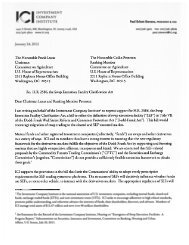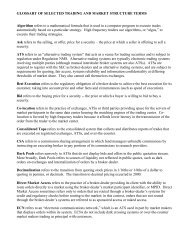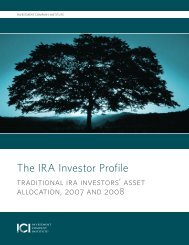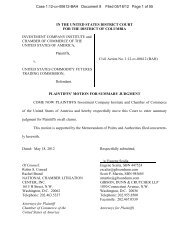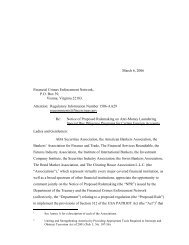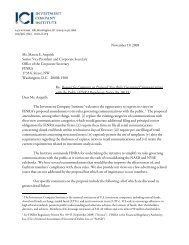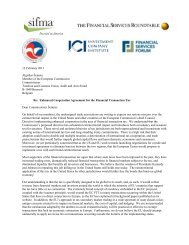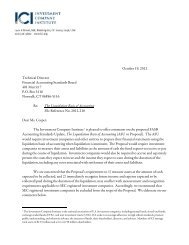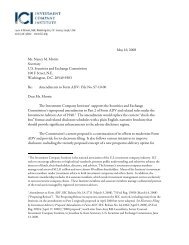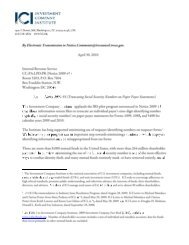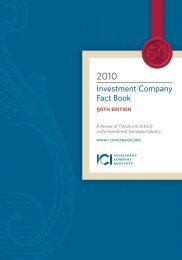Understanding Shareholders' Use of Information and Advisers (pdf)
Understanding Shareholders' Use of Information and Advisers (pdf)
Understanding Shareholders' Use of Information and Advisers (pdf)
- No tags were found...
You also want an ePaper? Increase the reach of your titles
YUMPU automatically turns print PDFs into web optimized ePapers that Google loves.
that would include the average estimate taken across allpossible samples with known probability. Approximately 95percent <strong>of</strong> the intervals figured in all possible samples wouldcontain the average estimate taken across all samples. Figure42 shows the approximate sampling error for estimates <strong>of</strong>proportions computed for the sample as a whole <strong>and</strong> for subsamples<strong>of</strong> various sizes.DATA ANALYSISThe survey data were evaluated using several analytical techniques.Cross tabulations <strong>of</strong> the data were used for descriptiveanalysis. Cluster analysis, along with analysis <strong>of</strong> variance, wasused to generate the shareholder segments <strong>and</strong> determine themost discriminating variables in the segment creation. Clusteranalysis is a multivariate statistical procedure that organizesrespondents into relatively homogeneous groups based ontheir answers to survey questions. Three clusters emergedfrom the survey data using this technique. Univariate, onewayanalysis <strong>of</strong> variance tests were then computed on thevariables used in the cluster analysis to determine the mostdiscriminating variables in the cluster solution. A univariateanalysis <strong>of</strong> variance tests the hypothesis that the means foreach cluster (or segment) are equal for each variable. Othermultivariate techniques, such as factor analysis, were used toconfirm the veracity <strong>of</strong> the segments.FIGURE 42Statistical Reliability for Determining Accuracy <strong>of</strong> Observed Percentagesby Sample Size <strong>and</strong> Percent <strong>of</strong> ResponsesOBSERVED PERCENTAGESSampling Errors at the 95 Percent Confidence Level10 percent or 20 percent or 30 percent or 40 percent orSample Size 90 percent 80 percent 70 percent 60 percent 50 percent1000 2 3 3 3 3700 2 3 4 4 4500 3 4 4 5 5250 4 5 6 6 6100 6 8 9 10 10This table shows that if, for example, the sample size is 700 <strong>and</strong> if 10 percent <strong>of</strong> the respondents provide the same answer to a question <strong>and</strong> 90percent provide the other answer, then a 95 percent confidence interval for responses for the first answer is 10 percent + – 2 percent <strong>and</strong> a 95percent interval for responses for the second answer is 90 percent + – 2 percent.44



